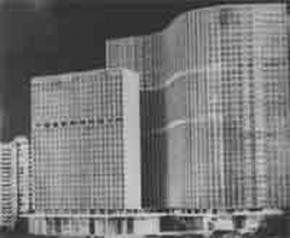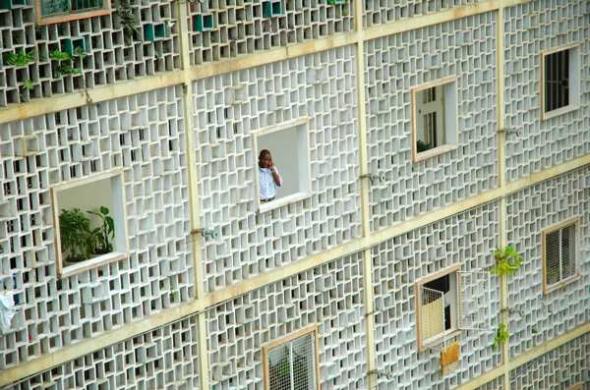Niemeyer's Dream and the parallel universe
November 1975, in a flash thousands of people flee the city. The colony is over and the countdown restarts. Luanda, the capital of Angola, in the western coast of Africa is now a vacant space and it awaits, anxious, for its new tenants. New inhabitants, new freedom. Just like “squatters” of today inside buildings marked by moments, memories, odors of erstwhile, Luanda anticipates the concept and receives doors open the new occupants. The unbridled occupation originates social blend. Luanda transforms itself into a singular city, where the poorest and the billionaire cohabit in the same buildings and share the same steps, just like Oscar Niemeyer had dreamed of when he designed the emblematic Copan.
 Copan, projecto de Niemayer
Copan, projecto de Niemayer
The parallel between Copan and post-independence Luanda remains present. Just like the failed dream of Niemeyer, on the opposite side of the Atlantic, the explosive population growth of the city of Luanda induces vertigo. Housing overcrowding, staunched traffic, cinema theatres converted into churches and elevators into houses. A long plunge into chaos commences. Between civil war and the new world order, Saturday’s maize porridge [funge] and multinational corporations, the city resists. The communist dream dies off and new towers grow. Capitalism is wild and this time around there is no space left for utopias, “time is money.”
We abandon the asphalt city and make our way into the never-ending musseques (township ghettos). The landscape is greyer here, but grey here, only the landscape. Harbor of politicians, former military, war refugees, catholics, muslims, mucubal, travesties, and celebrities, the musseque reinvents itself in every instance. It makes no difference if we live in communism or capitalism, mono or stereo party system. Power here is autonomous to any institution, or religious belief. It is dispensed on the streets and neighborhoods, enclosed in its borders. Economy is homemade, based on the retail of retail. Culture is hybrid, intense and extremely experimental. High-tech marries animism, the rhythms and dances take over by storm the city of asphalt. Candongueiros (informal taxis), as if they were youtube, propagate the music and attitude arising from the musseques through cities and villages, all over national territory. The musseque at last has created a national identity.
Any attempt at conceiving theories on these phenomena becomes useless and obsolete the minute they are created. This universe is definitely parallel. Impossible not to join in. There are no isolated figures nor tourists in this story, no one goes by indifferently. Life is a constant diligence. Cities like these are everywhere, they are planetary in essence, continents become small for them. They overflow continental frontiers and also those of fiction. Its swift mutation and a susceptible immune system, make it incapable of any sort of prevention of the unknown agent. Everything becomes part of it.
November 1975, quick as lightening thousands of persons flee the city. The colony is over, the counting begins from zero. Luanda is now an empty space and waits, anxious, for its new tenants. New habitants, new freedom. Like “squatters” now inside buildings marked by old moments, memories, scents from another time, Luanda anticipates and receives the new occupants with open doors.
The frantic settlement generates social mixture. Luanda becomes a singular city, where the poor and the multimillionaire live in the same building and share the same steps, as Oscar Niemeyer had dreamed once when he projected the emblematic Copan.
 Alô, alô de Kiluanji Kia Henda, 2006, cortesia da Fundação Sindika Dokolo
Alô, alô de Kiluanji Kia Henda, 2006, cortesia da Fundação Sindika Dokolo